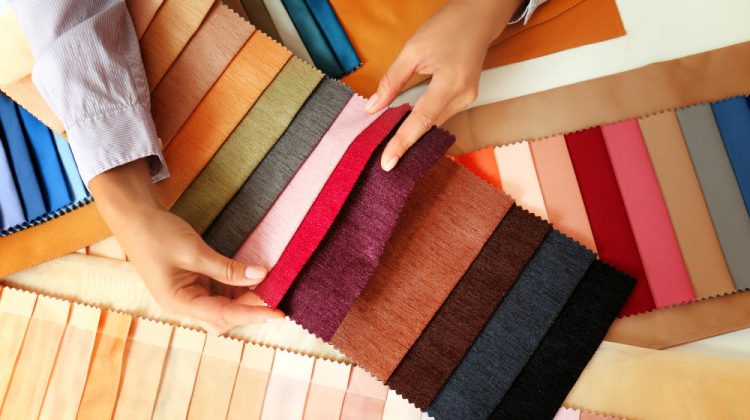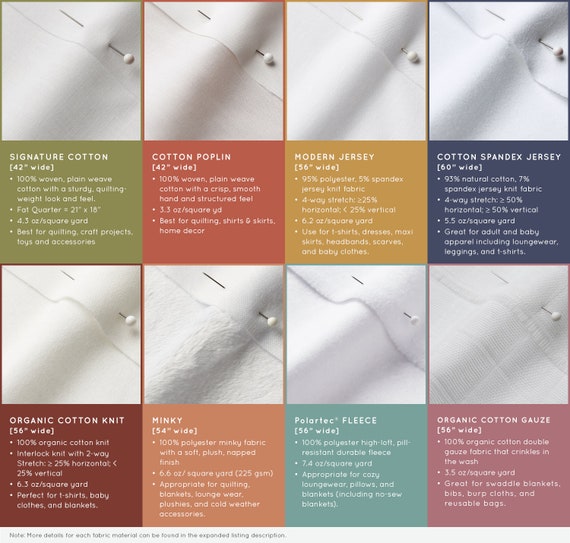The 20-Second Trick For All 4 Way Stretch Fabrics
The 20-Second Trick For All 4 Way Stretch Fabrics
Blog Article
Not known Factual Statements About All 4 Way Stretch Fabrics
Table of ContentsFacts About All 4 Way Stretch Fabrics Uncovered4 Simple Techniques For All 4 Way Stretch Fabrics6 Easy Facts About All 4 Way Stretch Fabrics DescribedSome Ideas on All 4 Way Stretch Fabrics You Should KnowRumored Buzz on All 4 Way Stretch FabricsGetting The All 4 Way Stretch Fabrics To WorkAll 4 Way Stretch Fabrics Fundamentals Explained
As I likewise want UV protection from my garments when I go out, I would select a densely woven cotton material. Also the undergarments is better in cotton (No spandex bands anywhere near the skin). Look into the finest fabrics suitable for making summer season garments. Another consideration when buying the fabric is the means it will after washing.A safe bet would be to purchase at least 10% extra fabric. If you can acquire preshrunk material, this is the best.

If you are matching the color, like picking the lining for the primary textile or picking fabric to include as trim, this is especially essential. The textile display rooms will typically have a light well where you can see the fabric in sunshine (or a window with great light from outdoors).
The Basic Principles Of All 4 Way Stretch Fabrics

The majority of materials are regarding 44 vast. When you go to purchase material, estimate exactly how much you desire first and after that go to the shop.
Some terrific bargains can be had this way. In dressmaking, we get material by the yard/meter.
More About All 4 Way Stretch Fabrics
In a quarter of a backyard, you get a 9 by 44 strip of material, which is concerning 22 cm in size. According to the width of materials, they might be called single-width and double-width.
You can discover more regarding backyard to meter conversion right here. Take a look at this message on checking out a measuring tape Select textiles that are not too difficult or inflexible, or you would not fit in them. Bed linen, Denim, flannel, For chillier environments, select woollen (100% along with woollen blends) woollen tweeds, woollen crepe; it generally depends upon what pants you are talking about Tailored trousers, Unstructured Pant, Combined, Denim.
All cotton textiles are good for children. Knit materials are also excellent for kids you can go for wool knits.
All 4 Way Stretch Fabrics Fundamentals Explained
Have a look at this message on the best material for garments for children and children for even more detail on this topic. Light-weight cotton is my favored to stitch skirts. Cotton yard cloth in pretty prints is fantastic. Silk jersey is a fantastic material for stitching skirts, as is Ponte Roma knit fabric.
Drapey rayons, soft wool, lycra blends, and stretch velours are all suitable for stitching skirts. Woollen (Wool crepe has a wonderful drape and provides enough framework for jackets; woollen tweeds are excellent as well), Linen & Flannel. Raw silk, satin, taffeta, velvet, Shoelace, silk chiffon, and Fabric are all great for making dresses.
You can buy medium-weight materials with some spandex/elastane included for a fitting bodycon-type outfit. For drapey outfits, you can choose light-weight fabrics. Jersey has a drapey fit similar to this. Crepe, challis, and charmeuse are all drapey textiles suited for this style. Check out these messages: Ideal textile for making laid-back gowns and tops; Names of various dresses. Rayon, Acetate, and cotton lining materials are widely made use of.
Light-weight cotton material, Cambric, Chintz, Twill, Faille, Seersucker, Poplin, light-weight woven broadcloth, batiste, bed linen, eyelet are great for making shirts and blouses. Smooth satin textile is excellent for making airy tops. When acquiring patterned textile (most of the patterned fabric comes with a size of 45 or 54 inches), there will certainly be pattern repeat in these materials, and this need to be taken into consideration when cutting material as well as purchasing them i.e., if you want to match the patterns at the joints.
How All 4 Way Stretch Fabrics can Save You Time, Stress, and Money.
The motifs will certainly be distributed in a planned style on the fabric. You may see often If the print is not placed on the material appropriately, it can not be matched or lined up when constructed without distorting the fabric and the hang of the garment.


The fabric weight is dependent on many elements like the weave, fiber type, etc and is typically represented by GSM. GSM can vary from 60 -700; 700 being the GSM of extremely high-grade woolen material.
One thing you have to maintain in mind is that greater textile weight does not represent higher fabric high quality. It simply is an indicator of the viability of the textile for a specific task. You can not choose high fabric weight textile jeans for a lightweight drifting shawl. Understanding the material weight is useful when comparing the exact same sort of fabrics, yet also this will depend upon its application.
In a nutshell, the most vital criteria to look for in the material you acquire are as complies with (https://www.artstation.com/rayherrera3/profile). The number of strings per inch of textile (yarns-per-inch).
Unknown Facts About All 4 Way Stretch Fabrics
In premium fabric, this balance (either in numbers or in size) will constantly be kept. Processes utilized on material to enhance look and performance.
A two-ply yarn transcends to a single-ply yarn.
If you are preparing to begin a new embroidery task, choosing a material will certainly be one of the most crucial step when you determine what you want to make. After you've gone to all the difficulty and cost of buying the sewing machine you enjoy, a pattern you love, and a textile you like, you desire the completed product to be a success? One method to complete that is a fantastic read to start by making certain your fabric is really right for the project.
8 Easy Facts About All 4 Way Stretch Fabrics Explained
As an example, if you're making a quilt, you'll automatically wish to use quilter's weight cotton for ideal outcomes. But what if you desire to make a product of clothing? How do you know which material will provide you the most effective result? Picking a material just due to the fact that you like the print or layout on it isn't always the most effective approach.
In order to prevent doing a whole task for basically absolutely nothing, we have actually put together some ideas to help you make a decision which material is right for your project. Let's say you currently have a job in mind; how do you find the ideal textile for it?
Then, consider the attributes you desire the finished item to have. If garments, will it be fitted or loosened? Dressy or day-to-day? For warm climate or cold? Do you want a solid shade or a print? If you are making a non-wearable product such as a pillow cover or pot holder, use a strong fabric such as canvas.
There is so much details out there about textiles, their qualities, and their uses, it can reach be frustrating! So don't attempt to take it in all at the same time; simply begin with the task available. Discover all you can about the fabric you make use of for this set task.
Report this page